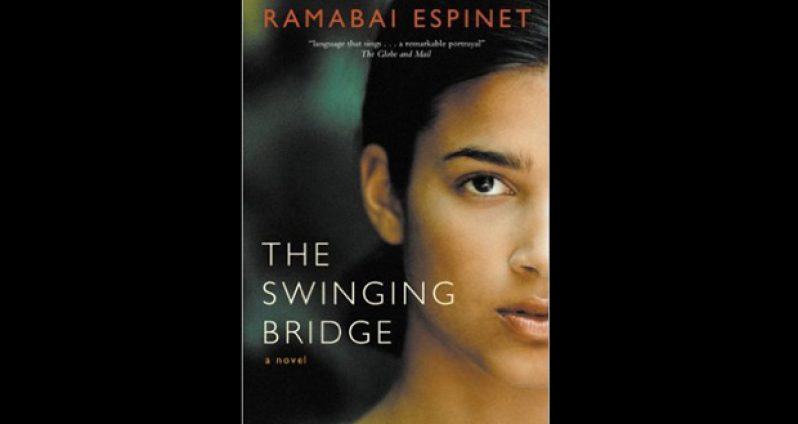Ramabai Espinet is a Trinidadian-born writer whose novel, The Swinging Bridge, was published by Harper Collins in 2003. The novel tells the story of Mona Singh and the host of other characters who constitute her family. As a West Indian novel, the work focuses on postcolonial themes, tying them in with other important areas of study, such as gender, subaltern studies, the Indo-Caribbean experience, history, art, etc.
One of the most important facets of the novel is the way Espinet, in tracing the family’s history, manages to show how the West Indian Subaltern (which is, in its simplest definition, the individual who has been rendered voiceless in, and removed from, the dialogue between oppressed and oppressor) is an entity that has existed from the beginning of the Caribbean’s colonial history that has changed its form and method of formation, but is still very much present in our society.
Starting with Gainder, Mona’s great grandmother, who came to the Caribbean as a thirteen year old indentured immigrant, we see the Espinet’s attempt to speak for the voiceless indentured immigrant women who came to work in the West Indies. Her presentation of Gainder is one that shows us how foolhardy we are when people, thinking of indentured immigrants, often picture them as farmers and workers who were used to toiling the land from birth. Espinet’s Gainder is a talented singer and dancer, trained in the classical Indian arts, who upon her arrival to Trinidad is forbidden from practicing her skills. This shift in Gainder’s identity, from artisan to lowly indentured worker, is enough to remove the one-dimensional image of not only Gainder herself, but also all other indentured labourers who, like Gainder, would have had their own skills, their own stories, and their own histories that were lost as soon as they came to work on the estates.
Espinet also presents us with modern day Subalterns, such as her brother Kello, who as a gay man dying from AIDS is portrayed as a Sexual Subaltern – othered and rendered voiceless on account of both his sexuality and his illness. The interesting thing about Kello though is the fact that he seems to have chosen to be voiceless in the whirlwind of voices that is his family. Kello is one of the strongest and bravest characters in the novel and although he does speak, he never speaks about himself or his own wants and desires or his own experiences. Whether it is because of shame or because of his tenuous relationship with most of his family or because being the Subaltern is simply something inherited from a colonial past, Kello reduces himself to a Subaltern by choosing to suppress his own personal truths.
Quite interestingly, Espinet even presents children as Subaltern. She is able to show how children are often left out of the conversation and their voices disregarded in the many conversations that take place between the grown-ups in the children’s world. A good example of this happening is when Kello’s father and grandfather are debating whether they should sell their home. Kello has strong feelings about this issue, but while the adults are arguing, his opinion is not heeded or even regarded as relevant.
The thing about the Subaltern though is that even though they do not have a voice, there are often people who speak for the Subalterns. Mona as the voice of the novel’s many Subalterns is one which does not further victimize the voiceless, but one which gives life to the Subalterns, telling their stories and redeeming their identities.
Ramabai Espinet’s The Swinging Bridge
SHARE THIS ARTICLE :
Facebook
Twitter
WhatsApp




.png)









